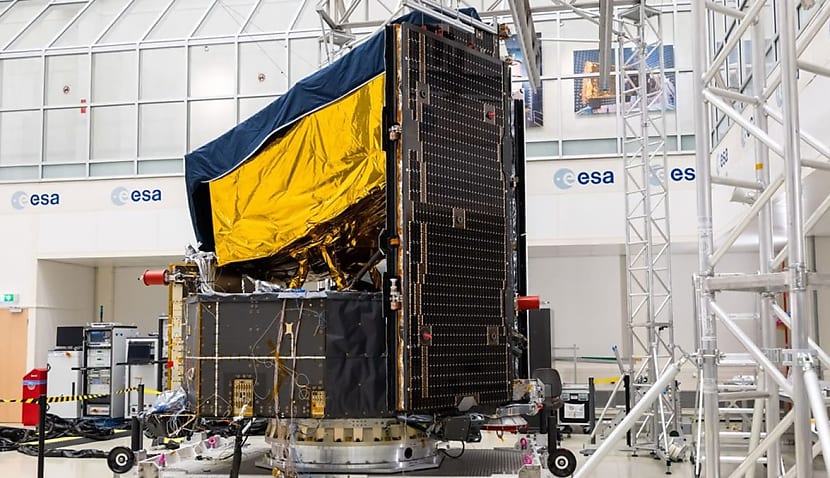PLATO, short for PLAnetary Transits and Oscillations of stars, is designed to search for Earth-like planets orbiting sun-like stars. PLATO will help answer some of astronomy’s biggest questions: Are there other worlds like ours? How do planetary systems form and evolve?
Between 10 and 13 June 2025, engineers at aerospace company OHB System AG in Oberpfaffenhofen, Germany, completed the integration of PLATO’s two main components: its optical bench carrying 26 high-precision cameras and the service module, which contains systems for power, propulsion, communications and data handling.
The delicate alignment work was completed with millimetre accuracy before all electrical connections were successfully tested.
“Almost exactly eight years after ESA approved PLATO, both the satellite and its unique telescope are complete and on schedule,” said Professor Heike Rauer, scientific lead for the mission at the German Aerospace Center (DLR). “With 26 cameras instead of a single large telescope, PLATO will be able to monitor around 250,000 stars for orbiting planets.”
The next step will see PLATO transported to ESA’s Space Research and Technology Centre in the Netherlands where it will receive its solar panels and sun shield before being placed in a vacuum chamber for environmental testing.
Once cleared, the spacecraft will travel to Kourou, French Guiana, for launch aboard an Ariane 6 rocket in December 2026.
Operating from the second Lagrange point about 1.5 million kilometres from Earth, PLATO will use its network of cameras to detect tiny dips in starlight as planets pass in front of their host stars.
The mission is expected to uncover thousands of new exoplanets, including rocky, icy and gaseous worlds, advancing our understanding of how planetary systems develop across the galaxy.
The PLATO consortium, led by DLR and including major European partners such as Thales Alenia Space and Beyond Gravity, is responsible for the scientific instruments, data processing and mission operations.
Germany has played a leading role in both hardware and software development, including the mission’s advanced camera electronics and data systems.
PLATO’s discoveries are expected to shape the next generation of planetary science and perhaps bring humanity one step closer to finding another world like our own.

